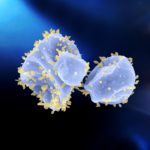Link to Pubmed [PMID] – 35078938
Link to DOI – 10.1073/pnas.2120620119
Proc Natl Acad Sci U S A 2022 Feb; 119(5):e2120620119
Viruses are a distinct type of replicators that encode structural proteins encasing virus genomes in virions. For some of the widespread virus capsid proteins and other major components of virions, likely ancestors encoded by cellular life forms are identifiable. In particular, one of the most common capsid proteins, with the single jelly-roll (SJR) fold, appears to have evolved from a particular family of cellular carbohydrate-binding proteins. However, the double jelly-roll major capsid protein (DJR-MCP), the hallmark of the enormously diverse viruses of the kingdom Bamfordvirae within the realm Varidnaviria, which includes bacterial and archaeal icosahedral viruses as well as eukaryotic giant viruses, has been perceived as a virus innovation that evolved by duplication and fusion of the SJR capsid proteins. Here we employ protein structure comparison to show that the DJR fold is represented in several widespread families of cellular proteins, including several groups of carbohydrate-active enzymes. We show that DJR-MCPs share a common ancestry with a distinct family of bacterial DJR proteins (DUF2961) involved in carbohydrate metabolism. Based on this finding, we propose a scenario in which bamfordviruses evolved from nonviral replicators, in particular plasmids, by recruiting a host protein for capsid formation. This sequence of events appears to be the general route of virus origin. The results of this work indicate that virus kingdoms Bamfordvirae, with the DJR-MCPs, and Helvetiavirae that possess two SJR-MCPs, have distinct origins, suggesting a reappraisal of the realm Varidnaviria.

